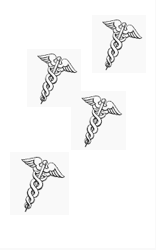By Peter Pronovost, MD
 Today, an intensive care unit patient room contains anywhere from 50 to 100 pieces of medical equipment made by dozens of manufacturers, and these products rarely, if ever, talk to one another. This means that clinicians must painstakingly review and piece together information from individual devices—for instance, to make a diagnosis of sepsis or to recognize that a patient’s condition is plummeting. Such a system leaves too much room for error and requires clinicians to be heroes, rising above the flawed environment that they work in. We need a heath care system that partners with patients, their families and others to eliminate all harms, optimize patient outcomes and experience and reduce waste. Technology must enable clinicians to help achieve those goals. Technology could do so much more if it focused on achieving these goals and worked backwards from there.
Today, an intensive care unit patient room contains anywhere from 50 to 100 pieces of medical equipment made by dozens of manufacturers, and these products rarely, if ever, talk to one another. This means that clinicians must painstakingly review and piece together information from individual devices—for instance, to make a diagnosis of sepsis or to recognize that a patient’s condition is plummeting. Such a system leaves too much room for error and requires clinicians to be heroes, rising above the flawed environment that they work in. We need a heath care system that partners with patients, their families and others to eliminate all harms, optimize patient outcomes and experience and reduce waste. Technology must enable clinicians to help achieve those goals. Technology could do so much more if it focused on achieving these goals and worked backwards from there.
This week marks a step that holds tremendous promise for patients and clinicians. On Monday the Masimo Foundation hosted the Patient Safety Science & Technology Summit in Laguna Niguel, California, an inaugural event to convene hospital administrators, medical technology companies, patient advocates and clinicians to identify solutions to some of today’s most pressing patient safety issues. In response to a call made by keynote speaker former President Bill Clinton, the leaders of nine leading medical device companies pledged to open their systems and share their data.
Lack of interoperability between medical devices plays no small role in the 200,000 American deaths caused by preventable patient harm each year, such as in the case of 11-year-old Leah Coufal. After undergoing elective surgery, Leah received narcotics intended to ease her pain.
When Leah received too much medication, it suppressed her breathing, eventually causing it to stop altogether. Had she been monitored, a device could have alerted clinicians when Leah’s breathing slowed to a dangerous level.
But as we know, clinicians are busy and unfortunately don’t always respond to alarms from bedside machines. If a machine measuring her breathing had been linked with the device delivering her medication, it could have automatically stopped the drugs from infusing into her blue, oxygen-deprived veins.
All of this is possible today; technology is not a barrier. Until now, the only thing that’s stood in the way is a lack of leadership and a lack of willingness for device manufacturers to cooperate.
Continue reading…













